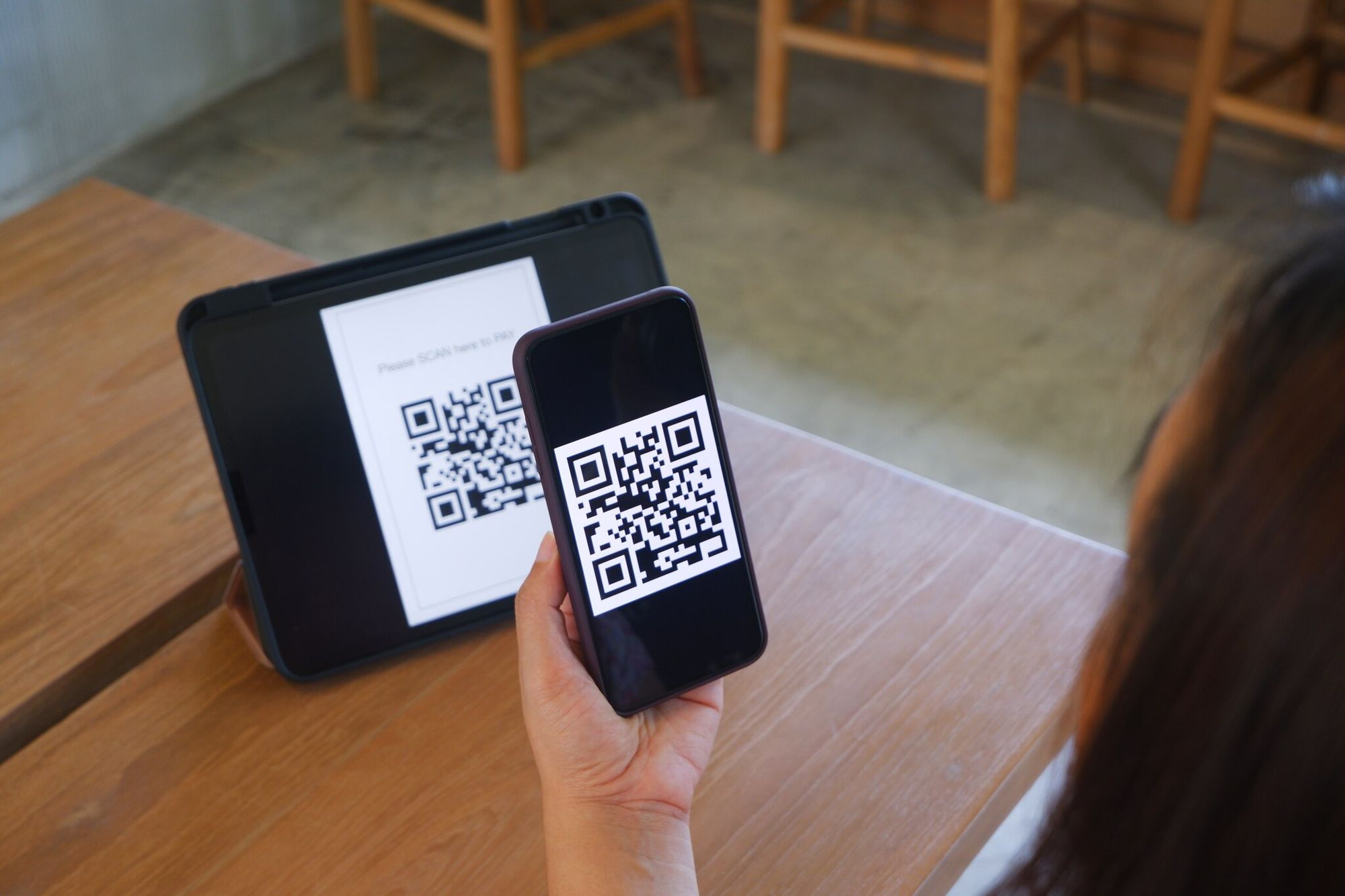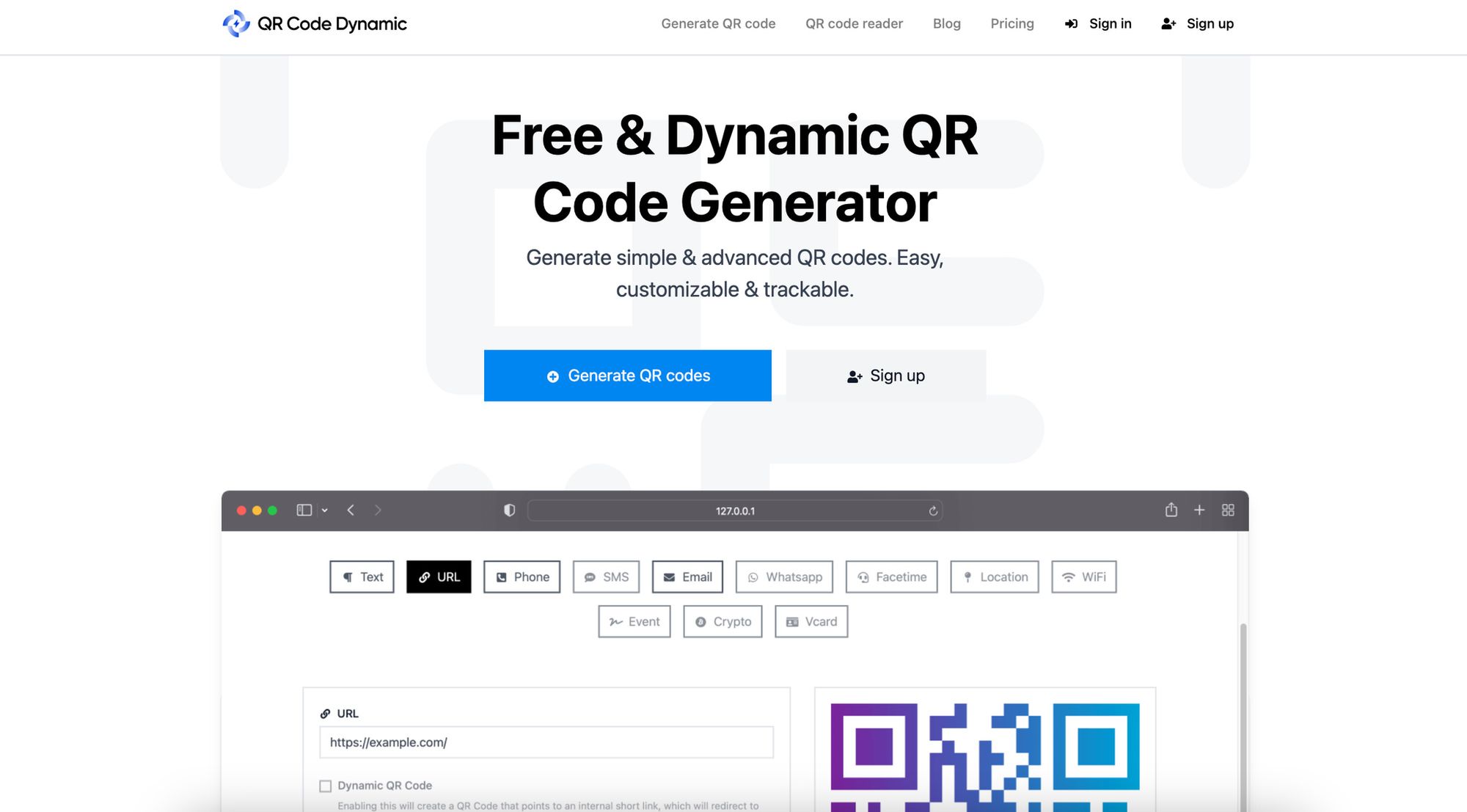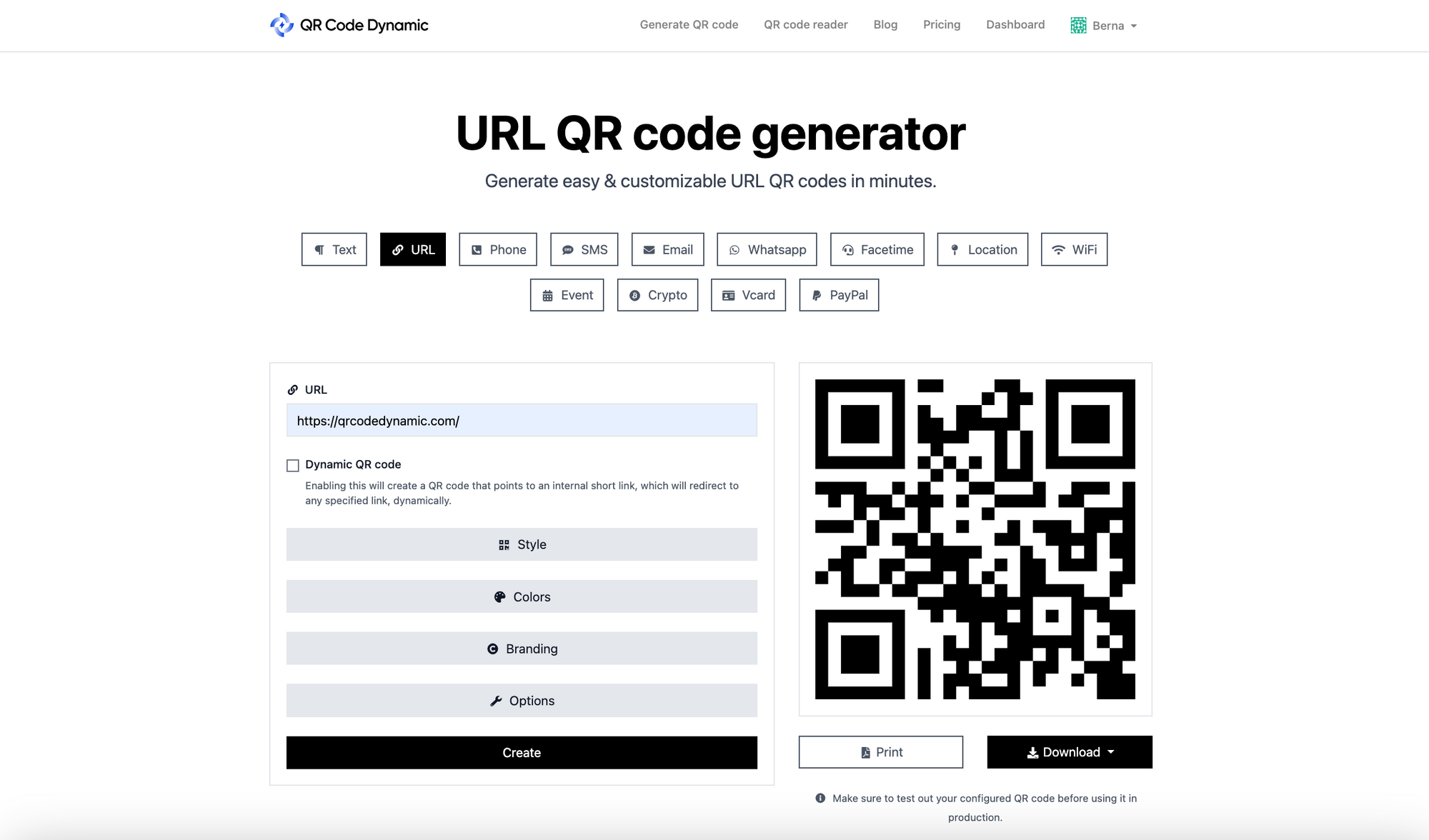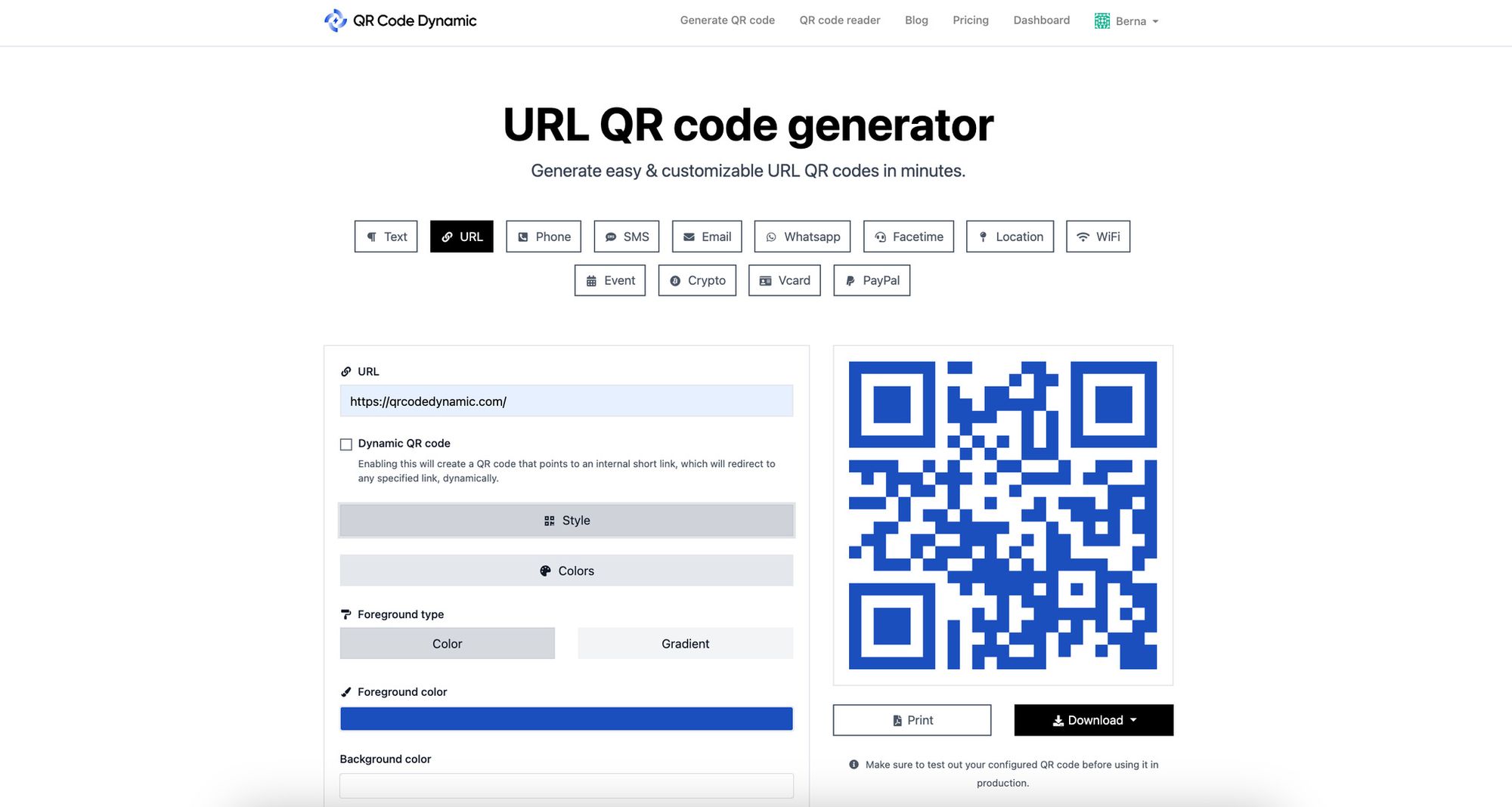QR codes are transforming libraries, merging traditional reading spaces with cutting-edge technology.
This blog post explains the innovative use of QR codes in libraries, highlighting their role in enhancing efficiency and user experience.
Let's explore the impactful integration of QR codes in the library world.
Importances of QR Codes in Libraries

QR codes are revolutionizing libraries, enhancing accessibility, efficiency, and user engagement.
Here's how they're making a difference:
- Simplified Book Searching: QR codes make finding books fast and easy. Scan a code, and you're instantly connected to the online catalog, pinpointing book locations - a digital librarian at your fingertips.
- Instant Access to Reading Materials: Access ebooks, research papers, and digital magazines instantly by scanning a QR code. Ideal for students and researchers needing diverse, timely resources, and extends access to remote users.
- Effective Library Promotion: Use QR codes for cost-effective marketing. They're great for advertising events, new books, and programs, increasing community engagement and awareness of library offerings.
- Effortless Contact Information Sharing: QR codes provide an easy way for patrons to save library contact details, enhancing communication and encouraging more interaction.
- Streamlined Internal Processes: For library staff, QR codes simplify inventory management and book tracking, boosting operational efficiency and allowing more focus on customer service.
- Engaging Young and Tech-Savvy Patrons: QR codes attract tech-oriented users, offering digital scavenger hunts, interactive learning, and augmented reality features, making the library experience more engaging for a tech-forward audience.
- Bridging Physical and Digital Collections: QR codes link physical books to digital content like author interviews and book reviews, enriching the reading experience with comprehensive insights.
- Enhanced Accessibility: Cater to diverse patron needs with QR codes that offer audio descriptions, sign language videos, and simplified texts, ensuring inclusivity for all community members.
- Environmental Sustainability: By reducing the need for printed materials, QR codes help libraries decrease their carbon footprint, appealing to eco-conscious patrons.
11 Ways to Use QR Codes in Libraries

QR codes have emerged as a dynamic and versatile tool in modern libraries, offering a variety of innovative applications that enhance the user experience. Let's explore the multitude of ways libraries can use QR codes to revolutionize their services, engage with patrons, and streamline processes.
1. Interactive Library Experience with QR Codes
- Virtual Tours: QR codes can guide patrons on self-guided virtual tours of the library. Scanning a code at different points can reveal historical facts, showcase special collections, or introduce library services.
- Augmented Reality Features: Implement augmented reality (AR) experiences by linking QR codes to AR apps, where patrons can interact with 3D models or virtual representations of authors and historical figures.
2. Convenient Library Processes using QR Codes
- Self-Checkout Systems: Implement a QR code-based self-checkout system, enabling patrons to borrow books quickly and efficiently by scanning the codes on the books and their library cards.
- Book Renewal and Returns: Link QR codes to the library's online renewal system, allowing patrons to easily renew borrowed items or find return instructions.
3. Boosting Library Promotion and Reach with QR Codes
- Event Promotion: Promote library events by linking QR codes to event registration pages or to detailed information about the event.
- Feedback and Surveys: Collect patron feedback by linking QR codes to surveys. This can help in improving library services and tailoring events to patron interests.
4. Ensuring Easy Accessibility to Books using QR Codes
- Direct Links to eBooks and Audiobooks: Place QR codes on physical books that link directly to their digital counterparts, offering immediate access to ebooks and audiobooks.
- Additional Content: Link QR codes to author interviews, book discussions, or related articles, enriching the reading experience.
5. Conducting Library Contests Using QR Codes
- Participation in Contests: Use QR codes to facilitate participation in library contests. Patrons can scan to submit entries or to vote for their favorite submissions.
6. Accessing Libraries' Music and Art Collection via QR Codes
- Multimedia Collections: Link QR codes to the library's digital music and art collections, providing an immersive experience in the arts.
- Virtual Exhibitions: Create virtual exhibitions where QR codes lead to detailed information about artworks or musical pieces, including artist bios and historical context.
7. QR Codes in Contact Tracing
- Safe Visitation Records: In the context of health and safety, QR codes can be used for contact tracing by logging visits to the library, ensuring a safe environment for all.
8. Keeping Up with Technological Trends
- Tech Hub Zones: Establish 'Tech Hub' areas in the library where patrons can explore the latest technologies, with QR codes providing information and tutorials on how to use them.
9. Streamlining Library Administration
- Staff Training: Use QR codes for staff training modules, providing easy access to training materials and resources.
- Inventory Management: Enhance inventory management by using QR codes to track books and resources within the library.
10. Fostering Community Engagement
- Local Artist Showcases: Support local artists by linking QR codes to their portfolios or to information about their work displayed in the library.
- Reading Programs for Kids: Integrate QR codes into reading programs for children, linking to interactive stories or educational games.
11. Environmental Sustainability
- Reducing Paper Usage: Implement QR codes to reduce the need for printed materials, contributing to the library's sustainability efforts.
Additional Innovative Uses of QR Codes in Libraries

- Language Learning Resources: Link QR codes to language learning resources, helping patrons who are non-native speakers or learning a new language.
- Community Bulletin Boards: Create a digital community board where QR codes link to community events, local news, or volunteer opportunities.
- Technology Workshops: Host technology workshops and use QR codes as an interactive element, teaching patrons about new tech trends and digital literacy.
- Accessibility Features: Link QR codes to accessible formats of books or library materials, such as large print versions, braille, or audio descriptions for the visually impaired.
In conclusion, QR codes offer a plethora of possibilities for libraries to innovate, engage, and connect with their community. From enhancing the patron experience to streamlining administrative tasks, the versatility of QR codes can significantly transform the way libraries operate.
As libraries continue to embrace digital transformation, QR codes stand as a testament to the blend of tradition and technology, making libraries more accessible, efficient, and enjoyable for everyone.
How to Create QR Codes for the Library
Creating and customizing QR codes for your library can be both simple and fun. Here's a step-by-step guide to help you get started:
Select a QR Code Generator:

- Choose an online QR code generator first. You can use QRCodeDynamic to create QR codes for the library.
Decide the Content:

- Determine what the QR code will link to (e.g., book catalogs, digital resources, event pages).
Customize Your QR Code:

- Add colors and your library's logo for branding.
- Ensure the QR code remains scannable after customization.
Test the QR Code:
- Scan with different devices to ensure it works correctly.
Strategic Placement:
- Place QR codes where they are visible and relevant.
- Consider patron traffic and needs for placement.
Educate Patrons and Staff:
- Train staff on how to use QR codes.
- Create instructional signage for patrons.
Update Content Regularly:
- Keep linked content current.
- Utilize the ability to change content without changing the QR code.
Integrate with Library Services:
- Use QR codes for checkouts, library cards, or Wi-Fi access.
Track and Analyze Usage:
- Use tracking features to gain insights into patron behavior.
Ensure Accessibility:
- Place QR codes at accessible heights and locations.
- Offer alternative access methods for those without smartphones.
Be Creative:
- Use QR codes for interactive experiences, virtual tours, or library games.
By following these steps, you can effectively incorporate QR codes into your library system, enhancing user experience and modernizing your library's services.
Advantages of QR Codes in Libraries

Integrating QR codes into library services is more than just a nod to technology—it's a game-changer that brings many advantages.
From enhancing user experience to streamlining library operations, QR codes reshape how libraries interact with patrons and manage their resources.
Let's explore the numerous benefits QR codes bring to libraries.
Ease of Use
- User-Friendly: QR codes are incredibly user-friendly. With a smartphone, patrons can access a wealth of information, making library services more accessible to a broader audience.
- Quick Access: They provide instant access to information, whether it's a book, an online resource, or details about library events. This immediacy is particularly appealing in our fast-paced world.
Versatility in Redirecting to Various Contents
- Diverse Applications: The versatility of QR codes lies in their ability to link to various types of content - from digital books and audio files to websites and videos. This flexibility makes them a powerful tool for enhancing the library experience.
- Customizable Links: QR codes can be easily updated to link to new content, making them adaptable and future-proof. This means libraries can keep their information up-to-date without the need for new physical materials.
Cost Efficiency
- Affordable Technology: Creating and implementing QR codes is remarkably cost-effective. Unlike other tech upgrades that might require significant investment, QR codes are inexpensive to produce and can be generated using free online tools.
- Reduced Printing Costs: By providing digital access to traditionally printed information, libraries can significantly reduce their printing costs, contributing to financial savings and environmental sustainability.
Making Your Library More Engaging through QR Codes
- Interactive Experiences: QR codes can transform a regular library visit into an interactive experience. Whether through virtual tours, scavenger hunts, or access to augmented reality, QR codes make the library more engaging and enjoyable.
- Enhanced Learning Opportunities: They provide opportunities for enhanced learning. Patrons can access additional educational content, like author interviews or historical backgrounds, enriching their knowledge and understanding.
Streamlining Library Processes

- Efficiency in Operations: QR codes streamline library processes, including book checkouts, returns, and inventory management. This efficiency allows library staff to focus more on patron interaction and less on administrative tasks.
- Data Collection and Analysis: They facilitate data collection and analysis. Libraries can track the usage of QR codes to gain insights into patron interests and behavior, helping to tailor services more effectively.
Boosting Library Promotion and Outreach
- Effective Marketing Tool: QR codes are an excellent marketing tool. They can be used to promote library events, new arrivals, and special programs, increasing patron engagement and community involvement.
- Social Media Integration: Libraries can use QR codes to enhance their presence, linking patrons directly to their social platforms and encouraging online interaction and sharing.
Enhancing Accessibility
- Accessible to All: QR codes make library resources more accessible. They can link to resources in various formats, including large print, braille, or audio, catering to patrons with different needs.
- Language Inclusivity: They support language inclusivity by providing access to resources in multiple languages, making the library more welcoming to non-English speakers and those learning new languages.
Encouraging Environmental Responsibility
- Eco-Friendly Approach: By reducing the need for printed materials, QR codes contribute to an eco-friendly approach in library operations. This aligns with the growing emphasis on sustainability in public spaces.
Fostering Community Engagement
- Connecting with the Community: QR codes can connect libraries with their local communities. They can link to community events, local news, or volunteer opportunities, fostering a sense of community involvement.
Conclusion
QR codes have revolutionized libraries, seamlessly blending traditional charm with digital innovation. This blog post highlighted their role in enhancing access, engagement, and efficiency in libraries.
As a key to keeping libraries technologically advanced and user-friendly, QR codes are pivotal in transforming these spaces into dynamic, inclusive community hubs.
Embrace the future of libraries where QR codes are not just a trend but a gateway to a more connected and interactive world of knowledge. 📚
Discover these blog posts before leaving:


